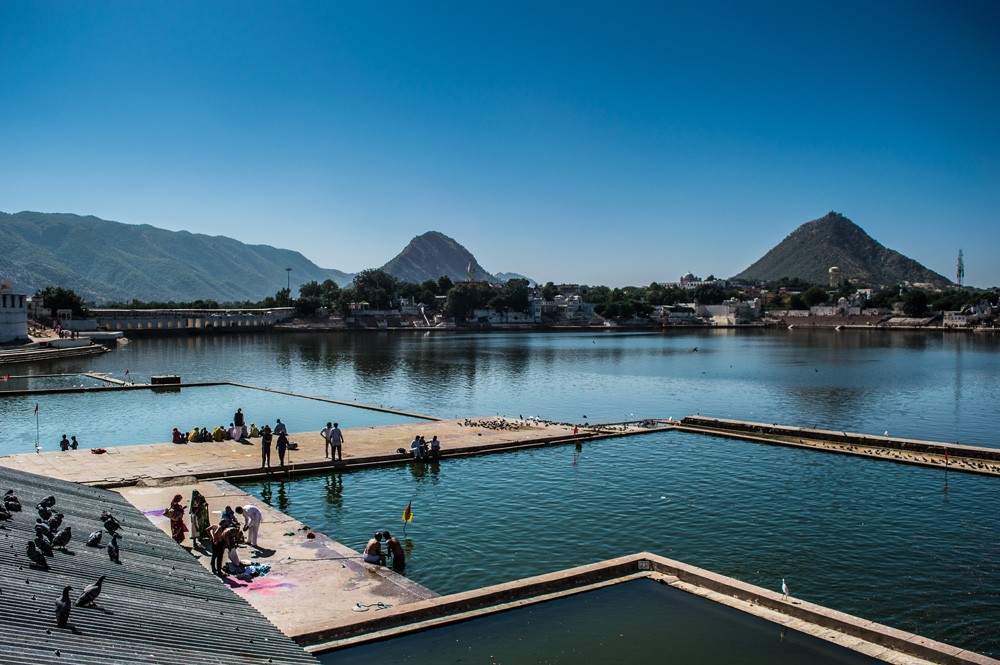Vibrant Slice of Daily Life by the Ghats, or Pushkar Lake Steps
By IIPians Saransh Singh
This image captures a vibrant slice of daily life by the ghats, or Pushkar lake steps, in India, the only temple of Lord Brahma, the generator of the world. The photograph presents a wide-angle view of a bustling riverside scene set against a backdrop of rolling hills and a clear blue sky.
Composition and Framing
The photographer has chosen a perspective that includes various elements of life by the water. The foreground is occupied by the ghats where people engage in various activities, from washing clothes to socializing. The converging lines of the ghats lead the viewer’s eye towards the center of the river, which then extends to the mountains in the distance, providing a sense of scale and vastness.
Cultural Representation
The scene is a rich tapestry of cultural practices. The ghats are a traditional and significant part of the river landscape in India, often used for ritualistic purposes and daily chores. This place likely serves as a communal hub where the pulse of the local community can be felt.
Color and Light
The bright daylight casts distinct shadows and highlights the textures of the scene. The vivid blue of the sky and the water adds a serene and crisp feel to the image, contrasting with the colorful clothing of the individuals on the ghats. The clarity of the light suggests either morning or late afternoon, times known for their more gentle lighting conditions and when people are more likely to gather by the water.
Reflection of Society
The image subtly reflects the societal structure and the intermingling of nature and civilization. It shows how communal spaces function in different cultures, providing a place for routine, ritual, and relaxation.

IIPian Saransh Singh | Diploma in Photography Student
Activity and Stillness
There is a dynamic juxtaposition within the image; the stillness of the landscape and the movement of the people. Birds line the foreground, adding another layer of life to the picture, seemingly undisturbed by the human activity around them.
In conclusion
In summary, the photograph is a window into the daily life of those who live alongside the river. It captures the essence of the cultural and social dynamics of the place, offering a narrative that is both personal and universal. Through this lens, the photographer invites viewers to witness and reflect on a moment of collective human experience.
